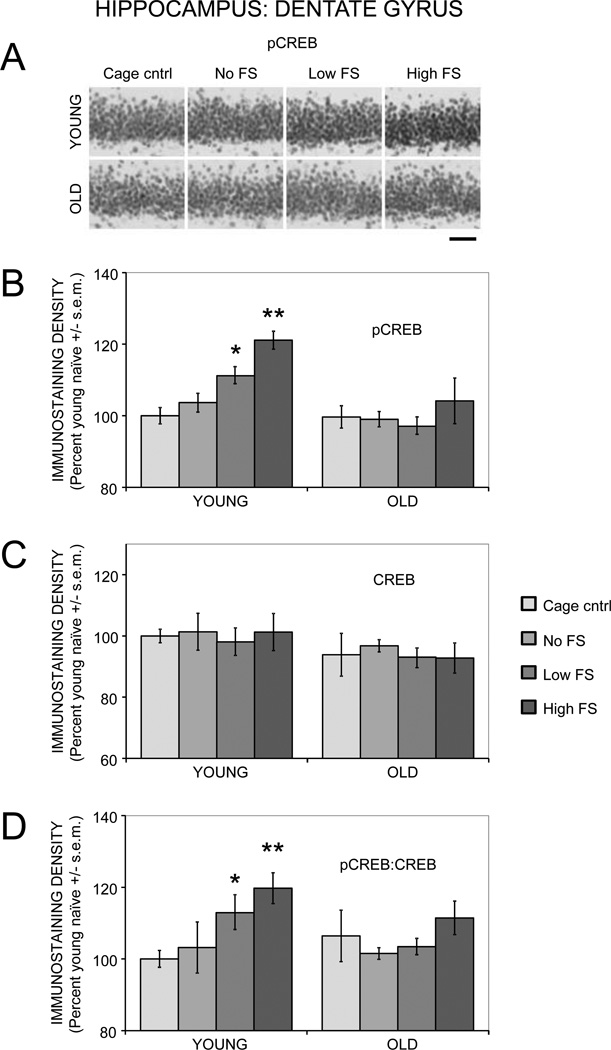Figure 3.
Age- and training-associated differences in pCREB and CREB immunoreactivity in the dentate gyrus of the hippocampus. (A) Representative photomicrographs of pCREB immunostaining. Scale bar = 50 µm. (B) Young rats had significantly enhanced pCREB levels following training with a low or moderate intensity foot shock, whereas old rats had training-related deficits in pCREB activation. (*) p < .01 vs. young cage controls. (**) ps < .05 vs. young cage control, no shock, and 0.2 mA. (C) Total CREB levels were similar between young and old rats and not altered by training. (D) Young rats had significantly higher ratios of pCREB:CREB after training with a low or moderate intensity foot shock, whereas old rats had training-related deficits in pCREB:CREB ratios. (*) p < .05 vs. young cage controls. (**) ps < .05 vs. young cage controls and young no shock.

